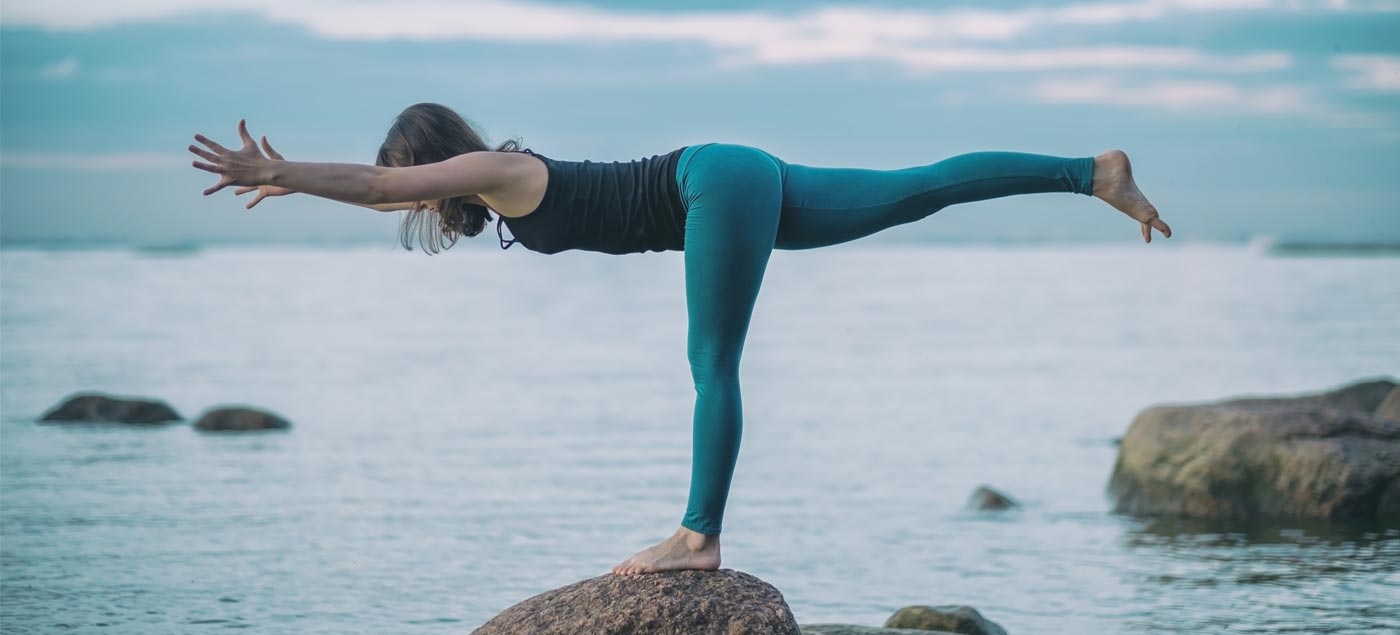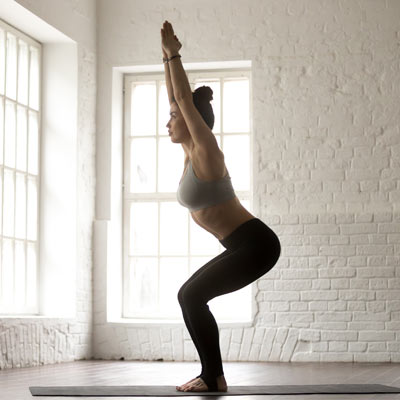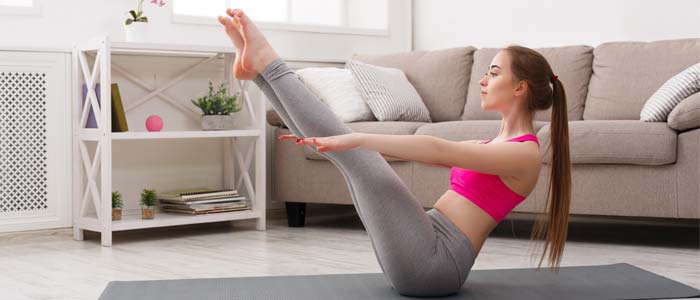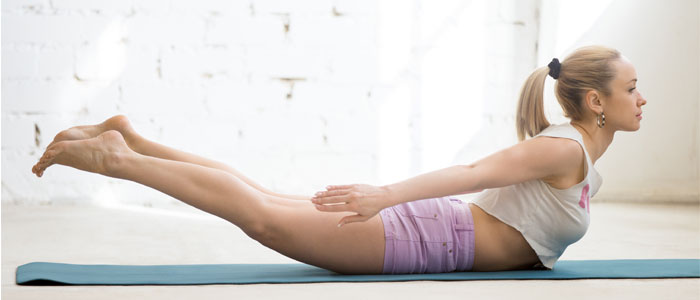The Yoga Challenge to Test Your Strength
24th Dec 19

Yoga is typically thought of as a healthy and relaxing way to stretch and centre yourself. It creates a happier and healthier body and mind, and this is absolutely true. What a lot of people don’t think of, however, is how gruelling it can be to actually perform some of the more advanced positions that yoga has to offer. Even worse still is how it can really help you to identify the weaknesses in your training. That’s where yoga challenges come into their own.
These feats of strength this yoga strength challenge poses don’t just apply to the more complex poses either. Even holding some of the more simplistic moves for prolonged periods of time can be incredibly difficult. We’ve segmented these two different types of challenges for you to look at and try for yourself. It will most likely be a lot harder than you’re thinking, so make sure you are taking the precautions you need, such as yoga mats (they’re important) and warming up before you try it for yourself.
Want to move fast? Jump to the right section below.
60 Second Holding Challenges
Actually, holding some of these positions for even a minute can prove to be a challenge for people, no matter what kind of training they are used to and no matter how much they can lift. A lot of them require good balance and stability alongside sheer strength and durability. They are really useful in helping you find your strengths and weaknesses.
Chair

The first position of our yoga strength challenge is definitely one of the poses that looks a lot easier than it actually is. The idea is to essentially use the mechanics that are used in a squat and lower yourself so that your thighs and coccyx are as close to the floor as possible. Once you’re in this pose with your arms outwards and upwards for balance, hold it for up to a minute before pushing yourself slowly out of it. This will really test your legs and your balance. It is HARD.
Boat

This pose takes on a lot of the mechanics typical in ab exercises like crunches and leg raises or the V-up. From a flat position on the floor, raise your torso and your legs together to create a v shape with your body, with your arms out in front to help with your balance and support. Hold the pose for a minute for a really solid ab contraction to see what you are made of.
Warrior 3

This is one of the more complex poses in our yoga challenge and takes away a lot of the supporting muscles that you will be used to using. It is difficult to keep your balance throughout, but it’s a really impressive feat if you do manage to do so. It’s worth practising. This one involves standing on one leg and straightening your other leg and your torso horizontally to form a T-like position. The distribution of weight is what causes most of the problems, but it’s important to keep your arms stretched out in front of you.
Locust

The locust is pretty much a massively extended hyperextension, which is hard enough on its own as part of a set rather than one long hold. Your lower back, abs and hips will all be pushed to their limit if you manage to hold this one! Lying on your front, contract your back to raise your abdomen and legs off the floor. Form a curve with your body, and hold. If your lower back isn’t a strong point, you’ll soon find out.
Performing Challenges
Now that we have gone through some of the more simplistic yoga positions that are just challenging to hold, we’ll go over the more complex poses that are just a real challenge to even get into in the first place. These don’t need to be held for too long, but they can be dangerous to perform. Ensure you take your time and only push yourself safely. They are not easy.
Firefly

The firefly is quite a well-known pose in yoga, but that doesn’t mean it is any easier than the rest of the moves on the list. You will really need your arms, legs, and abs for this one, working together in unison. Your flexibility does play a part in forming the pose, but your strength will determine actually pulling it off. You need a cocktail of skill here.
Bend over as if you were going to touch your toes and put your arms through your legs, wrapping them around. Place your hands on the floor, and focus. Once you’ve done this, which may take a while, shift the weight into your hands and extend your legs. Nightmare, right?
Peacock

In case that was easy, this one is even more of a challenge even for those experienced in yoga already. Abs, arms and chest are the main players in this one. It’s not as flexibility-focused, but it’s still a massive feat nonetheless. With your hands in line with your abs but fingers facing backwards instead of forwards, elevate yourself and angle your body to be on a decline.
It’s a little bit like doing a push-up, but also not in the slightest. Don’t underestimate it before you’ve tried it. Balancing yourself is half of the battle as well. If you’re used to using exercise machines instead of free weights, you are going to have a really hard time with this one.
Hand Stand

This is one of the most underrated strengths and balance feats in the exercising world. You might think you’ve mastered this one since you were six years old, but in later life, it’s a LOT more challenging. The strength needed to get into the pose and not just fall over or need something to balance on to do it is where the strength really lies rather than in the sheer muscles to get there; it could take you a good few attempts before you manage to do it successfully. Patience may be the key. If you can’t manage to balance, take a look at where you are failing to see if it is your arms, shoulder, back or abs that are letting you down. Then you know what to work on accordingly.
Side Note
As we have stated above and cannot stress enough, these exercises are very easy to get wrong. If you don’t know what you’re doing, it could be a good idea to try some of the more simplistic yoga moves first of all. That way, you get a feel of why you are doing what you’re doing and test your flexibility. That alone lets you know what you can and can’t do safely. Make sure you use padding, too, like a yoga mat. If you don’t manage to get it the first time, you aren’t going to cause yourself any injuries. Falling hurts!
Also, as we always say for any exercise, seriously warm up before you try it. You cannot be too prepared for these kinds of poses. Really stretch out every muscle you can think of before you decide to take them on. If you manage to get all of them accurately done, you can hold your head high as a true feat of your strength, balance and flexibility, working in unison and having real strength.
Good luck!

Before beginning any exercise or nutrition program, consult your physician, doctor or other professional. This is especially important for individuals over the age of 35 or persons with pre-existing health problems. Exercise.co.uk assumes no responsibility for personal injury or property damage sustained using our advice.
If you experience dizziness, nausea, chest pain, or any other abnormal symptoms, stop the workout at once and consult a physician or doctor immediately.









